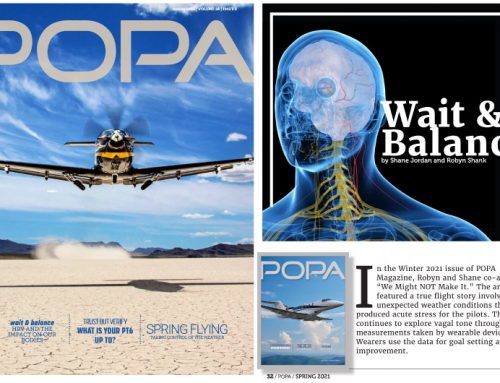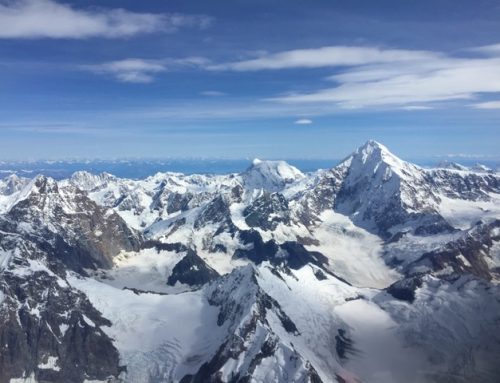Book Smart AND Street Smart
 Pilatus Owners and Pilots Association Magazine Article Fall 2019
Pilatus Owners and Pilots Association Magazine Article Fall 2019
Let’s ask ourselves a question: If we were to take a closed book test on our aircraft’s systems right now, how would we do? If we had an electrical failure in instrument conditions on our next flight, how would we do? If we just completed training, our answer would most likely be different than if we were 11 months away from our last training event. Safety critical skills decay with time. Period.
Let’s ask ourselves another question: Who is the most important cargo we are responsible for as pilots in command? Most of us flying the Pilatus PC-12 operate under FAR Part 91 – the least restrictive as far as training is concerned. The FAA only requires Part 91 operators to comply with a Flight Review every two years and Instrument Proficiency. No Type Rating…no Checkride…just Airplane Single-Engine Land which can be earned in a Cessna 152.
In comparison, FAR Part 121 operators keep their pilots’ critical skills sharpened by complying with stricter Advanced Qualifications Program (AQP) training requirements. This is the “gold standard” of aviation training: Initial Training and FAA Checkride followed by 25-100 hours Initial Operating Experience (IOE) with a Line-Check Airman (a pilot who has typically logged a minimum of 500 hours in type and undergone additional training). After that, a 9-month Recurrent Training program goes into effect with the first rotation as Line Oriented Flight Training (LOFT) in the aircraft and the second rotation as a simulator Checkride. Similarly, FAR Part 135 operators, which includes several PC-12 operators, complete Initial Training followed by 6-month line checks before their next annual Recurrent Training. As Part 91 operators, we have minimal training requirements, to include annual Recurrent Training required by the terms of our insurance policies, yet we have the privilege and the responsibility associated with carrying the people that are closest and dearest to us.
Hardening insurance…the aviation insurance industry has suffered financial losses with an increased volume of claims coupled by more expensive repairs, while premiums have remained stagnant. As a result, many aviation underwriters have dropped out of the market and those who remain have hardened their requirements and increased premiums. One way we can respond to these changes is to bolster our insurability through enhanced or more frequent training while maintaining a minimum of 100 annual flight hours in type.
Put your insurance application at the top of the stack. Tom Hauge of Wings Insurance wrote a very good article in the Summer 2019 POPA Magazine addressing the particulars of the insurance market and how owners / operators can become more attractive when shopping for their policy. Training was the first item on the list. To sum it up, it is all about how you can position yourself favorably to the underwriter. Additional FAA pilot ratings, PPPP Qualifications, Upset Recovery or High-Altitude Mountain Training are examples of supplementary training which can embolden your application.
Another opportunity is to alternate your training between simulator and in-aircraft. There is no argument simulator training provides value and allows the practice of procedures that cannot be safely duplicated in the airplane. Likewise, there is no argument that in-aircraft training allows real-world training that cannot be duplicated in the simulator, especially given the potential for vastly different cockpit layouts, winds, weather and complicated ATC environments. Looking at the FAR Part 121 and Part 135 operators’ requirements, you may notice that their training programs include both simulator and in-aircraft experiences. The best of both worlds; book smart and street smart.
If you choose to incorporate in-aircraft training to further sharpen your skills, be sure and ask your broker to shop different underwriters as each applicant is considered on a case-by-case basis for initial and annual recurrent training. In-aircraft instructors, like line check airmen, have time in type plus real-world experiences and can offer operational tips to further your education. For this type of training, you can select your location which minimizes time lost from busy schedules and allow for the accuracy of your specific aircraft.
Lance Toland of Lance Toland Associates proposed a 3-In-24 training model several years ago which was praised by underwriters, but as the market softened, was unenforced. It consists of 3 training events every 24 months, requiring in-aircraft training bookended by simulator training every 8 months. Now is a great time to revisit its merits. By shortening the training interval, pilots benefit in not losing proficiency while gaining an overall varied training portfolio. It needs to be addressed that shopping to renew an annual insurance policy could be out of synch with the 8-month training interval discussed, but the additional training and shortened interval can be viewed as another credit towards a favorable application and underwritten policy. Another option to explore is annual simulator training with 6-month in-aircraft training, modeling Part 135 operational rules.
In this new insurance market, do as much as you can to make your policy as attractive as possible to underwriters. Develop a portfolio of meaningful training. Consider additional training options that begin to model Part 121 and Part 135 operators…it will not only benefit your ability to get the best quote, but your passengers and precious cargo will continue to trust they are in the care of a highly trained pilot.
Shane Jordan
Owner, 3-Green Aviation, LLC
3greenaviation.com



